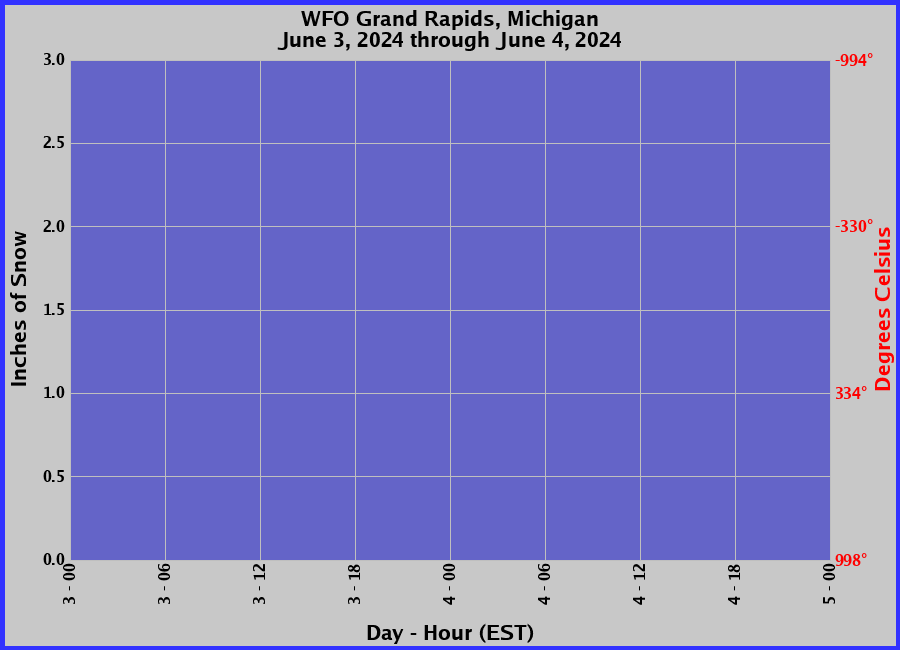
A rapidly-intensifying storm is expected to bring heavy snow, blizzard conditions, and icing from the Upper Midwest through the Great Lakes and Northeast. Scattered severe thunderstorms may produce severe/damaging wind gusts and a couple of tornadoes across parts of the Midwest and lower Ohio Valley through the evening. Arctic air will expand across the central and southern U.S.. Read More >
The Grand Rapids Office of the National Weather Service is participating in the automated snow sensor project. In the course of this project, graphs of the snow measurements are created. This page shares these graphs with the public. Please note that due to the developmental nature of this project and the fact that the sensor is not located in the same location that the official measurements are taken, it is unlikely that these graphs will match up with the official snow depth reported for each day.
The Snow Sensor probe is mounted above a standard snow board. The sensor sends ultrasonic pulses downward and listens for the echo. As the distance between the sensor and the snow surface decreases, the time it takes for the echo to return also decreases. By measuring the time between the pulse and its return echo, the distance between the sensor and the snow surface can be calculated. The sensor head also contains a temperature probe, allowing temperature data to be recorded concurrently with the snow depth.
Every five minutes, the system's Linux PC obtains a reading of both snow depth and air temperature from the Snow Sensor probe. These values are then recorded in a MySQL database. National Weather Service Meteorologists can query this database and view the data in tabular and graphical formats, or download it into a spreadsheet program for additional analysis.
The Snow Sensor probe is positioned within a double ring of snow fencing. The snow fencing dampens out most of the natural drifting that would normally occur. Without this dampening effect, the measurements taken by the probe could vary widely depending on whether the probe was currently measuring a peak or a valley.
The snow fencing also provides some degree of protection from wind blown debris landing on the snow board. The probe doesn't actually know what it is bouncing its sonic pulse off of. A piece of trash or other debris on the snow board could result in exaggerated depth measurements. The natural tendency for debris to collect along the fence line and stay there helps to insure a clean snow measurement area.
Because this is an experimental project to explore the effectiveness of automated snow sensors in the National Weather Service, it is necessary to occasionally verify that what the sensor is reporting reflects actual snow depth. To simplify this "sanity checking" process, the mounting post for the Snow Sensor probe has been marked at six inch intervals. The current actual snow depth can be easily eyeballed at a distance, so as to not disturb the snow pack around the probe.
The white area indicates the amount of snow the sensor detected, measured in inches and plotted against the scale on the left edge of the graph. The red line indicates the temperature the sensor detected, measured in degrees Celsius and plotted against the scale on the right edge of the graph. When the temperature scale includes 0° Celsius, a yellow "Freeze Line" will appear marking the freezing point of water.
The time of each reading is plotted against the scale on the bottom of the graph.
